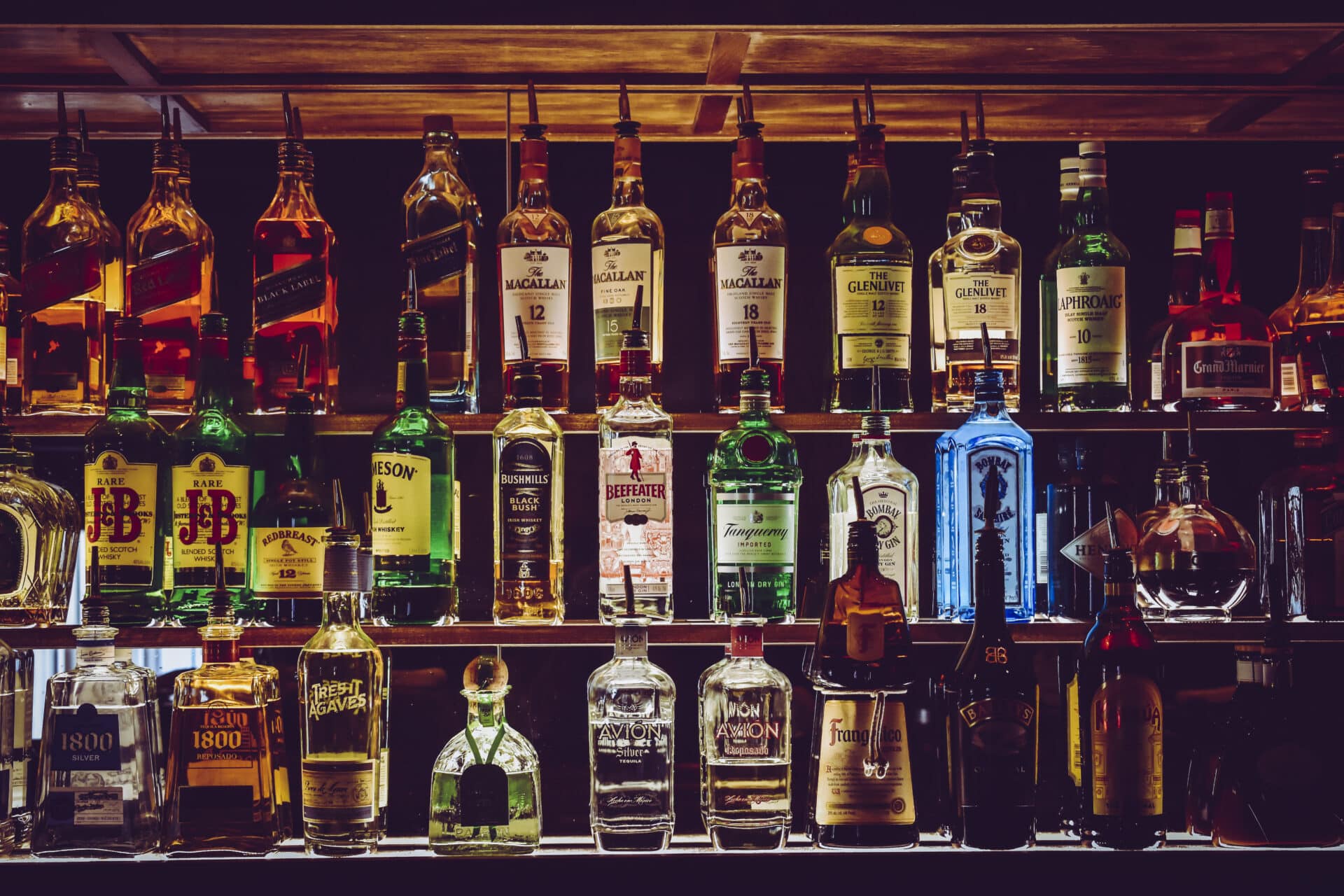Vodka is an alcoholic beverage that has become very popular in many parts of the world. It is a clear, colorless spirit that is often used as a base for cocktails and mixed drinks. But how is vodka made? Is it distilled or fermented? The answer to this question depends on the type of vodka being made, as there are several different methods of production. In this article, we will explore the differences between vodka that is distilled and vodka that is fermented.Vodka is a distilled alcoholic beverage made from fermented grains or potatoes. It is usually clear and is typically drunk neat (without mixers) or in cocktails. Vodka has a long history in Europe, where it originated in the Middle Ages and became popular throughout the region.
Vodka Distilled or Fermented?
Vodka is an alcoholic beverage that is made from a variety of ingredients, including grains, fruits, and potatoes. The process of making vodka involves both distillation and fermentation. During the distillation process, a mixture of ethanol and water is heated to separate the volatile compounds from the non-volatile components. The resulting liquid is then filtered and distilled again to remove any impurities. The distillate is then mixed with water to create vodka.
The fermentation process used to make vodka involves converting sugars into ethyl alcohol through the action of yeast. Yeast breaks down the sugar molecules and produces carbon dioxide gas as a byproduct. This gas is allowed to escape during fermentation, leaving behind a liquid containing ethyl alcohol and other flavoring components. The fermented liquid is then distilled multiple times to produce clear vodka with a very high alcohol content.
The final product produced by the distillation and fermentation processes can vary greatly depending on the ingredients used and how they are processed. Different types of vodka can range from light and smooth to robust and flavorful. Regardless of its flavor or strength, most vodkas contain around 40% alcohol
Distillation and Fermentation
Distillation and fermentation are two separate processes that are often confused with each other. Distillation is the process of separating a liquid mixture into its component parts, usually by boiling them off at different temperatures. Fermentation, on the other hand, is the process of converting sugar into alcohol or other organic compounds using yeast or bacteria. In both cases, the end result is a liquid that has been altered from its original form.
The main difference between distillation and fermentation is that distillation involves heating a liquid to separate its components, while fermentation does not involve any heat at all. With distillation, a mixture of liquids is heated until it separates into two or more liquids that have different boiling points. The vaporized liquid is then condensed back into a liquid form and collected in another container. This process can be used to purify water or alcohol, as well as many other substances.
Fermentation does not require heat. Instead, it relies on naturally occurring microorganisms such as yeast or bacteria to convert sugar into alcohol or other compounds. This process does not involve any evaporation or condensation
The History of Vodka Making
Vodka has been around for centuries. In fact, it is believed to have originated in Russia in the 8th century. It was originally made from fermented grains, such as rye and wheat, and was not distilled until the 16th century. The distillation process was invented by a Russian monk who wanted to make a drink that would last longer than beer or wine. Since then, the production of vodka has evolved into a multi-billion dollar industry with many different varieties available today.
Vodka is made from various sources, such as potatoes, corn, beets and wheat. After the ingredients are fermented and distilled, the liquid is then filtered through charcoal or other materials to remove impurities. The filtered liquid is then blended with water to create the desired proof or alcohol content before being bottled and sold.
Today, there are many different types of vodka available on the market. Some are flavored with fruits or spices while others are made from a single grain such as wheat or rye. There are also vodkas that contain added sugar for an added sweetness or other flavorings to give it a unique taste.
Vodka has
Different Types of Vodka
Vodka is a popular alcoholic beverage that is made by distilling grains, potatoes, or fruits that have been fermented. The most common type of vodka is made from grain, such as wheat, rye, and barley. While there are many different varieties of vodka available today, the two main types are traditional and flavored. Traditional vodka is typically unflavored and can be used in a variety of mixed drinks or enjoyed on its own. Flavored vodkas come in many different flavors, including berry, citrus, and even chocolate.
Traditional vodka is usually distilled multiple times and filtered through charcoal to create a clean taste. It’s often clear in color and has a neutral taste profile. Most traditional vodka brands have an alcohol content of 40 percent or higher and range in price from moderately expensive to very costly depending on the brand.
Flavored vodka is made by adding various natural or artificial flavors to traditional vodka. Popular flavored vodkas include raspberry, apple, cranberry, peach, lemon-lime, and orange. These flavored vodkas can be used to make creative mixed drinks as well

How is Vodka Made?
Vodka is a distilled spirit made from fermented grain or potato mash. This means that the grains or potatoes are heated and mixed with water, then the mixture is left to ferment in a large container. The fermentation process converts the natural sugars of the grains or potatoes into alcohol. After the fermentation process is complete, the mixture is then heated up again and transferred into a still to begin the distilling process.
The distillation process involves boiling off the alcohol vapors from the fermented liquid, and then capturing them in a condenser where they turn back into liquid form. This liquid – now concentrated with alcohol – passes through charcoal filters and other materials to remove any impurities before it goes through one final filtration process to produce clear vodka. Depending on the type of vodka, there may be additional rounds of distillation as well as other processes such as blending with other ingredients and adding flavoring agents for flavored vodkas.
Once all processes are completed, the vodka is bottled and ready for consumption!
Production Process of Vodka
The production process of vodka involves several distinct steps. The first step is fermentation. Fermentation is the process of converting a sugar source, such as grains, potatoes, or fruits, into alcohol. The material used for fermentation must be carefully prepared and monitored throughout the fermentation process to ensure that it produces the desired result. After fermentation, the material is distilled to create vodka. Distillation is a process where the alcohol content in the fermented liquid is increased while removing impurities and other undesirable substances such as congeners. This step will create a product with an ABV (alcohol by volume) of around 40%.
After distillation, vodka can go through a filtration process for additional refinement. Filtration removes any remaining impurities and can give vodka its characteristic smoothness and clarity. After filtration, the vodka can be flavored with additives such as herbs or fruit essences to create a unique flavor profile. Lastly, before bottling, the vodka needs to be diluted with purified water to bring its ABV down to between 30% and 50%.
Once all these steps are complete, the vodka is
Benefits of Distilled Vodka
Vodka is a popular alcoholic beverage that has been around for centuries and is enjoyed all over the world. It is made from fermented grains and potatoes, and then distilled to create a clear, odourless, flavourless spirit. The distillation process removes impurities, leaving behind a clean-tasting beverage with health benefits. Here are some of the key benefits of drinking distilled vodka:
The first benefit of drinking distilled vodka is that it is low in calories and carbohydrates. A single shot only has about 65 calories compared to other spirits like whiskey or rum which can have up to twice as many. This makes it an ideal choice for those looking to watch their calorie intake. Additionally, vodka has zero carbs so it won’t spike your blood sugar levels like other alcoholic drinks can.
Another benefit of drinking distilled vodka is that it has no fat or cholesterol, making it a great choice for those who are trying to maintain a healthy lifestyle. It also contains antioxidants which can help reduce inflammation in the body, as well as helping to protect against diseases such as cancer and heart disease.

Conclusion
Vodka is a distilled spirit, made by distilling fermented grains, fruits, or vegetables. Distillation is a process in which alcohol is separated from water and other liquids through evaporation and condensation. During this process, the alcohol content of the liquid is increased to a significant degree. Fermentation, on the other hand, produces alcohol from sugar without increasing its concentration. By understanding these two processes, it becomes easier to understand how vodka is made and why it is so popular around the world.
Vodka has become an important part of many cultures and its popularity continues to grow as more people discover its unique flavor and effects. Its versatility makes it a great choice for any occasion, from casual gatherings to formal events. With its low calorie content, vodka can also be enjoyed without the guilt associated with other alcoholic beverages. No matter how you choose to enjoy vodka, it will always remain a true classic that will never go out of style.

